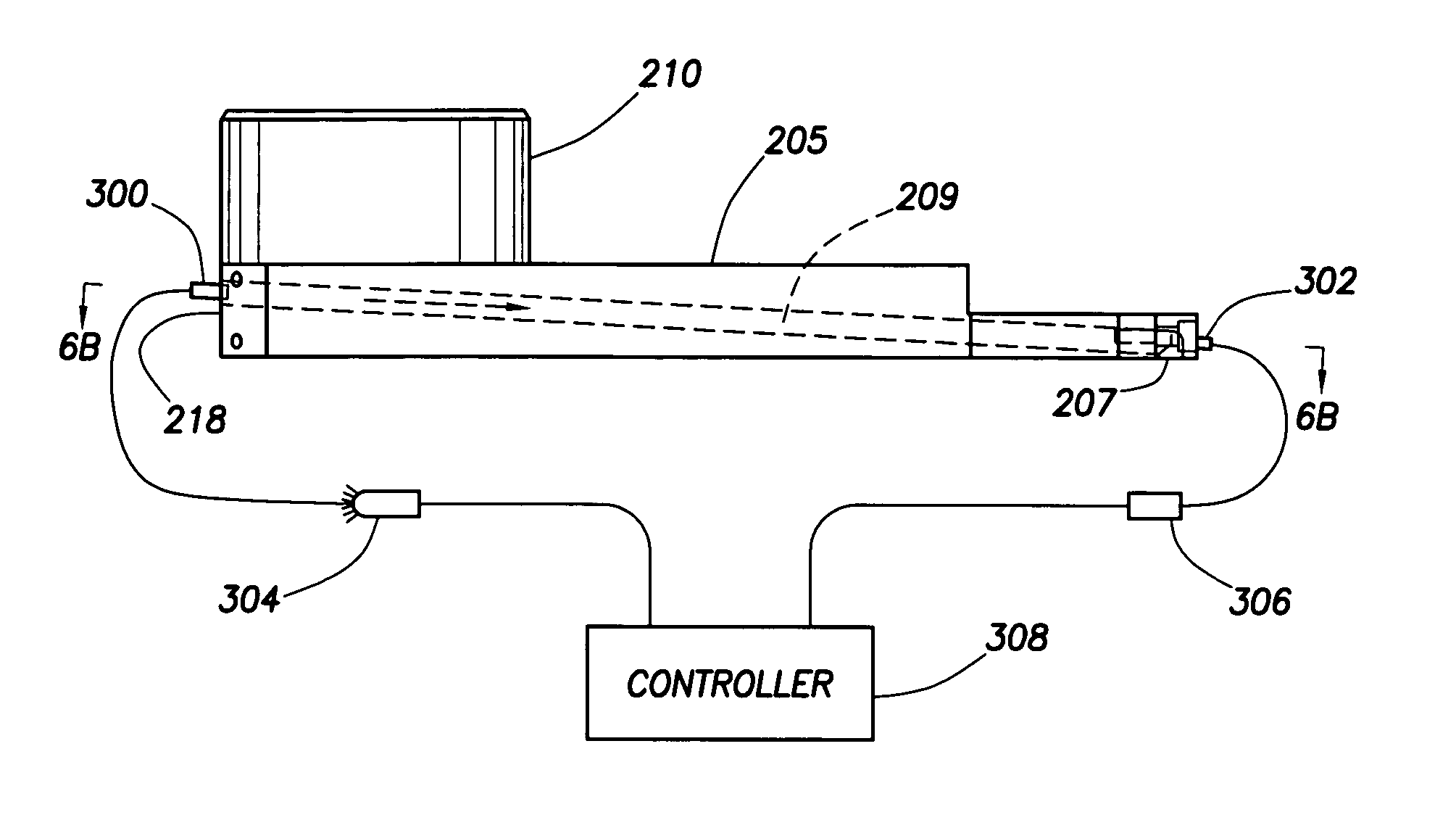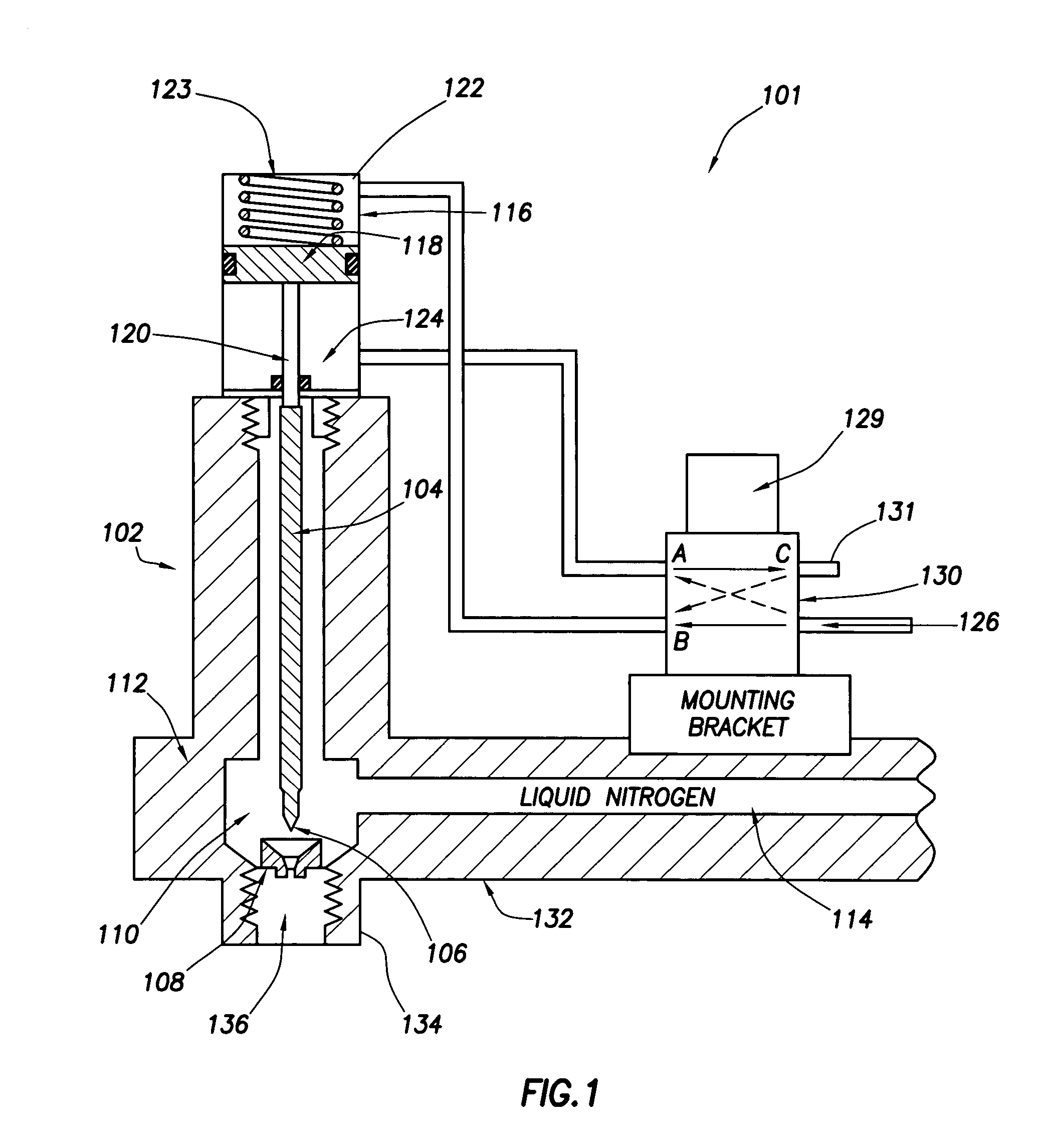Liquid delivery system with horizontally displaced dispensing point
a liquid delivery system and horizontal displacement technology, applied in the direction of liquid handling, container discharging methods, packaged goods types, etc., can solve the problems of affecting the operation, affecting the operation, and affecting the operation, so as to increase the operation speed of the liquid dosing assembly, offset the heat, and the effect of reducing the number of valves
- Summary
- Abstract
- Description
- Claims
- Application Information
AI Technical Summary
Benefits of technology
Problems solved by technology
Method used
Image
Examples
Embodiment Construction
[0034] The Horizontal Displacement Assembly
[0035] A typical dose assembly 101 sold by VBS is illustrated in FIG. 1, whereby droplets of liquid nitrogen are metered from a dosing head 102. The dosing head 102 includes a needle valve system for dispensing of the liquid nitrogen, the needle valve including a valve stem 104, with valve head 106 at its distal end, the valve head 106 sized for sealable engagement with valve seat 108. Reservoir 110 defined by valve body 112 acts as a local liquid cryogen supply chamber for holding liquid cryogen, inundating the seating area of the needle valve. Liquid nitrogen is fed to reservoir 110 through source conduit 114, extending from flexible dosing arm 132. It is contained in chamber 110 at slightly elevated pressure, e.g. 1 PSI above atmospheric. In a passive system, the pressure is created by the hydrostatic head of a larger cryogen source reservoir (not shown) placed above and supplying conduit 114. This liquid nitrogen supply may be pressuri...
PUM
| Property | Measurement | Unit |
|---|---|---|
| Angle | aaaaa | aaaaa |
| Angle | aaaaa | aaaaa |
| Temperature | aaaaa | aaaaa |
Abstract
Description
Claims
Application Information
 Login to View More
Login to View More - R&D
- Intellectual Property
- Life Sciences
- Materials
- Tech Scout
- Unparalleled Data Quality
- Higher Quality Content
- 60% Fewer Hallucinations
Browse by: Latest US Patents, China's latest patents, Technical Efficacy Thesaurus, Application Domain, Technology Topic, Popular Technical Reports.
© 2025 PatSnap. All rights reserved.Legal|Privacy policy|Modern Slavery Act Transparency Statement|Sitemap|About US| Contact US: help@patsnap.com



